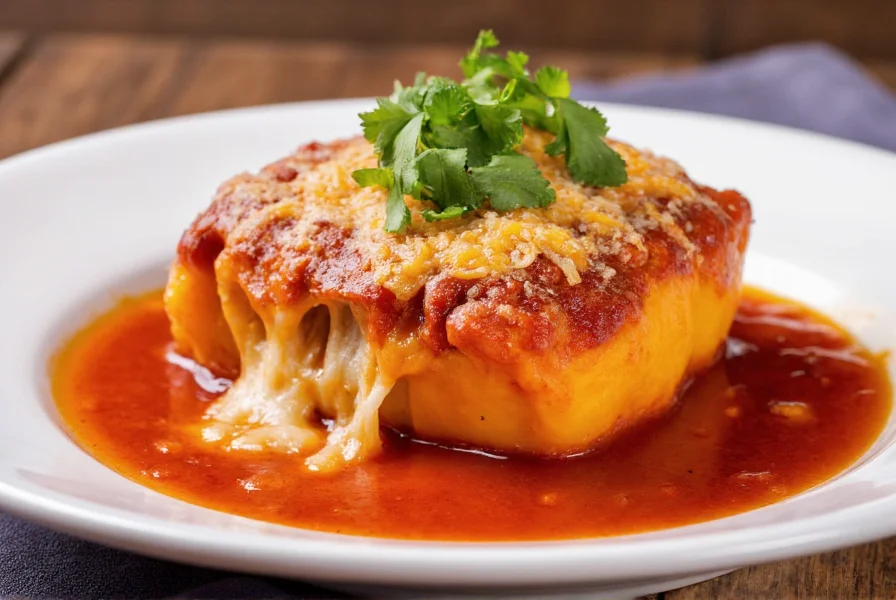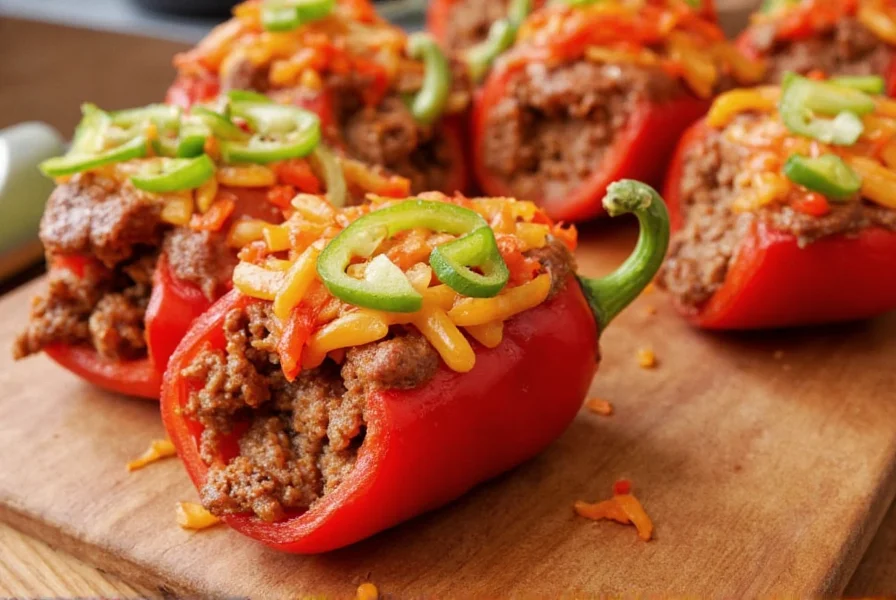When exploring what is chili relleno, you're discovering one of Mexico's most iconic culinary creations. This beloved dish transforms simple ingredients into a flavorful experience that has captivated palates for generations. The poblano pepper's mild heat and earthy flavor provide the perfect canvas for the creamy cheese filling, while the light egg batter creates a delicate crust that seals in the flavors.
Understanding Authentic Chili Relleno
The term "chili relleno" literally translates to "stuffed pepper" in Spanish, with "chili" referring to the pepper and "relleno" meaning stuffed or filled. While modern interpretations sometimes use bell peppers, authentic chili relleno always begins with poblano peppers, which offer the ideal balance of mild heat and robust flavor.
Traditional preparation involves several careful steps:
- Roasting the poblano peppers over open flame to loosen their skins
- Peeling and deseeding the peppers while preserving their shape
- Stuffing with cheese (sometimes with additional ingredients like picadillo)
- Coating in a whipped egg white batter
- Frying until golden brown
- Serving with tomato-based sauce or salsa
Regional Variations Across Mexico and Beyond
While the basic concept remains consistent, regional interpretations of traditional Mexican chili relleno recipe showcase the diversity of Latin American cuisine:
| Region | Distinctive Features | Common Accompaniments |
|---|---|---|
| Puebla, Mexico | Original version with simple cheese filling | Tomato-chile sauce, rice, beans |
| Mexico City | Often includes picadillo (minced meat filling) | Crema, queso fresco, guacamole |
| Tex-Mex | Frequently uses Monterey Jack cheese | Enchilada sauce, sour cream |
| California | May incorporate non-traditional cheeses | Avocado, pico de gallo |
These regional differences highlight how the authentic chili relleno ingredients have evolved while maintaining the dish's essential character. In some areas, cooks add seafood or vegetables to create unique variations that reflect local ingredients and preferences.
Chili Relleno vs. Similar Dishes
Many people confuse chili relleno with other stuffed pepper dishes. Understanding the difference between chili relleno and chile poblano is essential:
- Chile Relleno: Specifically refers to the stuffed and battered preparation
- Chile Poblano: Simply the pepper itself, which can be used in many dishes
- Chiles en Nogada: A related dish featuring poblano peppers stuffed with picadillo, topped with walnut sauce and pomegranate seeds
Unlike Italian stuffed peppers which typically use bell peppers and tomato sauce, authentic chili relleno maintains the integrity of the poblano pepper's flavor while showcasing Mexican culinary techniques.
Historical Roots and Cultural Significance
The origins of chili relleno trace back to colonial Mexico, where nuns in Puebla convents developed the dish using local ingredients. This history of Mexican stuffed pepper dishes reflects the blending of indigenous and Spanish culinary traditions.
According to food historians, the dish gained prominence in the 18th century when convent cooks began experimenting with cheese fillings for roasted poblanos. The egg batter technique developed later as a way to seal in the filling during frying. Today, chili relleno remains a staple at Mexican celebrations and family gatherings, symbolizing culinary heritage and regional pride.

Modern Preparation Techniques
While traditional methods remain popular, contemporary cooks have developed alternative approaches to how to make chili relleno from scratch. Some health-conscious versions bake rather than fry the stuffed peppers, while others experiment with different cheese combinations.
For authentic results, follow these key preparation principles:
- Use fresh, firm poblano peppers without blemishes
- Roast peppers properly to achieve perfect char without burning
- Whip egg whites to stiff peaks for the lightest possible batter
- Maintain consistent oil temperature (350°F/175°C) when frying
- Serve immediately for optimal texture and flavor
Many home cooks struggle with keeping the batter adhering to the peppers. The secret lies in thoroughly drying the roasted peppers before stuffing and using a light dusting of flour on the stuffed peppers before dipping in batter.
Nutritional Profile and Dietary Considerations
Chili relleno offers a balanced nutritional profile when prepared traditionally. A single serving typically contains:
- Approximately 300-400 calories
- 15-20g protein from cheese and egg
- Significant vitamin C from roasted peppers
- Moderate fat content, primarily from cheese
For those with dietary restrictions, several adaptations work well:
- Vegan versions using plant-based cheese alternatives
- Gluten-free preparation (naturally gluten-free when made traditionally)
- Lower-calorie options by baking instead of frying
- Dairy-free variations using alternative fillings

Bringing Authentic Flavor to Your Kitchen
Creating authentic chili relleno at home requires attention to detail but yields rewarding results. The key to mastering this dish lies in respecting the traditional techniques while adapting to your personal taste preferences.
When shopping for ingredients, seek out fresh poblanos at Mexican markets or well-stocked grocery stores. Look for peppers that feel heavy for their size with smooth, glossy skin. Properly roasted and stuffed, these peppers transform into a dish that embodies the rich culinary heritage of Mexico.
Frequently Asked Questions
What's the difference between chili relleno and chile relleno?
There is no difference - both terms refer to the same dish. "Chili" is the Americanized spelling while "chile" reflects the original Spanish spelling. Authentic Mexican recipes typically use "chile relleno" but both are commonly understood.
Can I make chili relleno without frying?
Yes, you can bake chili relleno for a healthier version. After coating the stuffed peppers in egg batter, place them on a greased baking sheet and bake at 375°F (190°C) for 20-25 minutes until golden. While the texture differs slightly from traditional fried versions, baked chili relleno maintains excellent flavor.
What cheese works best for authentic chili relleno?
Traditional Mexican recipes use queso fresco or Oaxaca cheese. Queso fresco provides a mild, slightly salty flavor that melts perfectly, while Oaxaca cheese offers excellent stringiness. In the United States, Monterey Jack makes a suitable substitute due to its similar melting properties and mild flavor.
How spicy are chili relleno peppers?
Poblano peppers used in authentic chili relleno range from mild to medium heat (1,000-2,000 Scoville units). They're significantly milder than jalapeños. The roasting process further reduces heat, and the cheese filling counteracts any spiciness, making chili relleno approachable for most palates.
Can I prepare chili relleno ahead of time?
Yes, you can prepare components in advance. Roast and stuff the peppers up to 24 hours ahead, storing them covered in the refrigerator. For best results, coat in batter and cook just before serving. Fully prepared chili relleno reheats well in the oven at 350°F (175°C) for 10-15 minutes, though the batter won't be as crisp as freshly made.











 浙公网安备
33010002000092号
浙公网安备
33010002000092号 浙B2-20120091-4
浙B2-20120091-4